Electronics Manufacturing Technical Articles
Papers and articles related to SMT, PCB & EMS industry.
- SMTnet
- »
- Technical Library
1752 SMT / PCB Assembly Related Technical Articles

Flex (Flextronics International)
Flextronics is a global full-service supplier of a full spectrum of value-added Electronic Manufacturing Services.
Singapore, Singapore
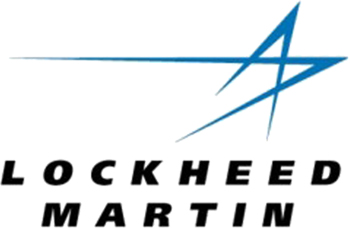
Lockheed Martin is a global security and aerospace company that employs about 112,000 people worldwide and is principally engaged in the research, design, development and manufacturing of advanced technology systems.
Bethesda, Maryland, USA

Manufacturer of advanced process chemistry for plating, masking and stripping. Custom manufacturing of automated equipment for electrodeposion including; hoist systems, reel-to-reel and continuous vertical processing equipment.
Cranston, Rhode Island, USA
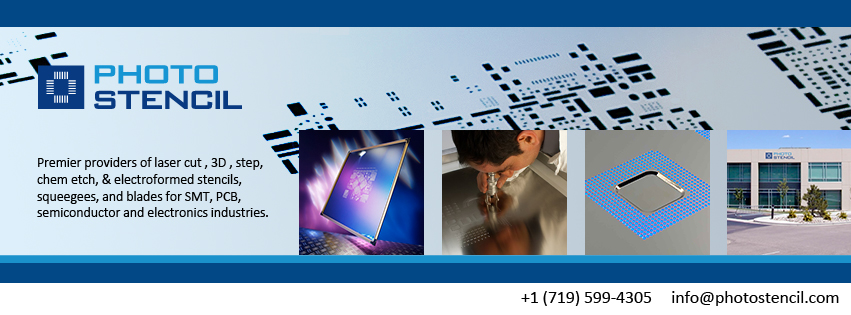
Photo Stencil provides high-performance stencils, squeegee blades, thick film and metal mask screens and tooling for the surface mount technology (SMT) assembly, solar, and semiconductor industries.
Colorado Springs, Colorado, USA
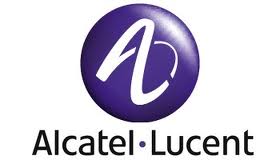
Alcatel-Lucent- Enterprise Business Group is a world leader in the delivery of communications solutions for businesses, including contact center software, small/medium business telephony and IP addres
Calabasas, California, USA

Lockheed Martin is a global security and aerospace company that employs about 112,000 people worldwide and is principally engaged in the research, design, development and manufacturing of advanced technology systems.
Bethesda, Maryland, USA

Bergquist, now a part of Henkel, supplies thermal-management solutions for electronic applications, serving a variety of industries ranging from automotive to consumer and industrial electronics as well as LED lighting.
Chanhassen, Minnesota, USA

Intel designs and builds the essential technologies that serve as the foundation for the world's computing devices.
Santa Clara, California, USA

Ericsson AB manufactures and markets radio and television communication equipment. The company was formerly known as Ericsson Radio Systems AB. Ericsson AB (Sweden) operates as a subsidiary of Ericsson.
Stockholm, Sweden

Flex (Flextronics International)
Flextronics is a global full-service supplier of a full spectrum of value-added Electronic Manufacturing Services.
Singapore, Singapore

Pioneers in the area of solderless assembly technology and originators of the OCCAM process. Developing IP for next and future generations of high reliability and better performing electronic products.
Seattle, Washington, USA
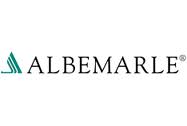
Albemarle is a leading specialty chemical company providing innovative chemistry solutions to customers in over 100 countries around the world.
Baton Rouge, Louisiana, USA

Smoltek offers a proprietary conductive nano-scale carbon technology tailored to support the future needs of the semiconductor industry.
Gothenburg, Sweden

BEST offers professional rework, repair and prototype builds of PCBs. Our expertise is on BGA rework and QFN rework. Our experienced instructors teach professional soldering classes as we are an IPC certified training center
Rolling Meadows, Illinois, USA

Founded in 1992, LaserJob specializes in laser-cut stencils for printed circuit boards used in electronic devices.
Fürstenfeldbruck, Germany

ETS - Energy Technology Systems, Inc.
Manufacturer of Fluid Dispensing Equipment for Selective Conformal Coating, Potting, Encasulation & Underfill including Inspection, Conveying and Curing. Total Solution Fluid Dispensing & Conformal Cocating Process Lines.
Deer Park, Washington, USA

A multinational electronics manufacturing services (EMS) company.
Toronto, Ontario, Canada
Manufacturer, Standards Setting / Certification, Training Provider

ETS - Energy Technology Systems, Inc.
Manufacturer of Fluid Dispensing Equipment for Selective Conformal Coating, Potting, Encasulation & Underfill including Inspection, Conveying and Curing. Total Solution Fluid Dispensing & Conformal Cocating Process Lines.
Deer Park, Washington, USA

ETS - Energy Technology Systems, Inc.
Manufacturer of Fluid Dispensing Equipment for Selective Conformal Coating, Potting, Encasulation & Underfill including Inspection, Conveying and Curing. Total Solution Fluid Dispensing & Conformal Cocating Process Lines.
Deer Park, Washington, USA

ETS - Energy Technology Systems, Inc.
Manufacturer of Fluid Dispensing Equipment for Selective Conformal Coating, Potting, Encasulation & Underfill including Inspection, Conveying and Curing. Total Solution Fluid Dispensing & Conformal Cocating Process Lines.
Deer Park, Washington, USA

Schleuniger, Inc. is a leading manufacturer of wire processing equipment. Our innovative automatic and semi-automatic machines are designed to cut, strip, crimp and mark all types of wire and cable.
Manchester, New Hampshire, USA

World's premier measurement company, providing the critical tools and technologies that sense, measure, and interpret the physical and biological world.
Loveland, Colorado, USA

Speedline Technologies serves the electronics assembly and semiconductor packaging industries with class-leading equipment, responsive support and unparalleled process knowledge.
Franklin, Massachusetts, USA

ETS - Energy Technology Systems, Inc.
Manufacturer of Fluid Dispensing Equipment for Selective Conformal Coating, Potting, Encasulation & Underfill including Inspection, Conveying and Curing. Total Solution Fluid Dispensing & Conformal Cocating Process Lines.
Deer Park, Washington, USA

ETS - Energy Technology Systems, Inc.
Manufacturer of Fluid Dispensing Equipment for Selective Conformal Coating, Potting, Encasulation & Underfill including Inspection, Conveying and Curing. Total Solution Fluid Dispensing & Conformal Cocating Process Lines.
Deer Park, Washington, USA

ETS - Energy Technology Systems, Inc.
Manufacturer of Fluid Dispensing Equipment for Selective Conformal Coating, Potting, Encasulation & Underfill including Inspection, Conveying and Curing. Total Solution Fluid Dispensing & Conformal Cocating Process Lines.
Deer Park, Washington, USA

iNEMI (International Electronics Manufacturing Initiative)
iNEMI is an industry-led consortium focused on identifying and closing technology gaps, which includes the development and integration of the electronics industry supply infrastructure.
Herndon, Virginia, USA

The Gardien Group is the world's largest provider of independent testing services to the PCB manufacturing industry.
Hillsboro, Oregon, USA

Flex (Flextronics International)
Flextronics is a global full-service supplier of a full spectrum of value-added Electronic Manufacturing Services.
Singapore, Singapore

DfR Solutions (acquired by ANSYS Inc)
DfR Solutions has world-renowned expertise in applying the science of Reliability Physics to electrical and electronics technologies, and is a leading provider of quality, reliability, and durability (QRD) research and consulting
College Park,

Honeywell is a Fortune 100 company that invents and manufactures technologies to address tough challenges linked to global macrotrends such as safety, security, and energy.
Morristown, New Jersey, USA

CYBEROPTICS is a global leader in high-precision 3D sensors that significantly improve yields and productivity in the 3D scanning and metrology, Surface Mount Technology & Semiconductor Markets
Minneapolis, Minnesota, USA

ETS - Energy Technology Systems, Inc.
Manufacturer of Fluid Dispensing Equipment for Selective Conformal Coating, Potting, Encasulation & Underfill including Inspection, Conveying and Curing. Total Solution Fluid Dispensing & Conformal Cocating Process Lines.
Deer Park, Washington, USA

ETS - Energy Technology Systems, Inc.
Manufacturer of Fluid Dispensing Equipment for Selective Conformal Coating, Potting, Encasulation & Underfill including Inspection, Conveying and Curing. Total Solution Fluid Dispensing & Conformal Cocating Process Lines.
Deer Park, Washington, USA

MacDermid is a global provider of specialty chemicals for the most complex printed circuit board designs. We specialize in the areas of final finishes, through-hole metallization, and circuit formation.
Waterbury, Connecticut, USA
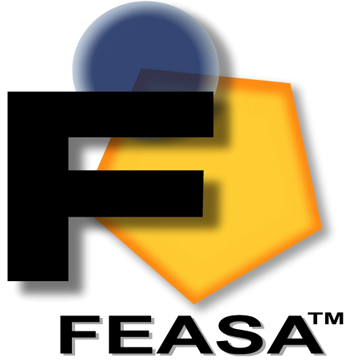
Feasa designs and manufactures a range of LED test products.
Limerick, Ireland

Lockheed Martin is a global security and aerospace company that employs about 112,000 people worldwide and is principally engaged in the research, design, development and manufacturing of advanced technology systems.
Bethesda, Maryland, USA

Panasonic Factory Solutions Company of America (PFSA)
PFSA develops and supports innovative manufacturing automation equipment, processes and solutions around the core of electronic assembly, microelectronic, software and circuit manufacturing
Rolling Meadows, Illinois, USA

Schleuniger, Inc. is a leading manufacturer of wire processing equipment. Our innovative automatic and semi-automatic machines are designed to cut, strip, crimp and mark all types of wire and cable.
Manchester, New Hampshire, USA

CALCE Center for Advanced Life Cycle Engineering
The largest electronic products research center focused on electronics reliability, is dedicated to providing a knowledge and resource base to support the development of competitive electronic components, products and systems.
College Park, Maryland, USA
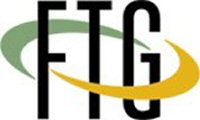
FTG is a leading North American manufacturer of high technology printed circuit boards and precision illuminated display systems.
Toronto, Ontario, Canada

Market leader and technology innovator of boundary scan software and hardware products and services.
Eindhoven , Netherlands
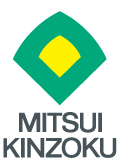
Manufacturing of functional engineered materials and electronic materials, nonferrous metal smelting, minerals resource development, precious metal recycling, raw material related businesses.
Tokyo, Japan

CYBEROPTICS is a global leader in high-precision 3D sensors that significantly improve yields and productivity in the 3D scanning and metrology, Surface Mount Technology & Semiconductor Markets
Minneapolis, Minnesota, USA

CYBEROPTICS is a global leader in high-precision 3D sensors that significantly improve yields and productivity in the 3D scanning and metrology, Surface Mount Technology & Semiconductor Markets
Minneapolis, Minnesota, USA

Manufacturer of high-performance precision rework systems for the electronics bench. Product lines include: Hand Soldering and Desoldering, Convection Rework products, Fume Extraction and Fluid Dispensing tools.
Cypress, California, USA

Intel designs and builds the essential technologies that serve as the foundation for the world's computing devices.
Santa Clara, California, USA

Advanced Assembly provides quality PCB assembly services for prototypes and low-quantity orders 87% faster than other shops.
Aurora, Colorado, USA

Digitaltest is a Leading Test Equipment Supplier of; High Accuracy Flying Probe Systems. High Speed, Non-Multiplexed, In-Circiuit Test Solutions. Functional Test Solutions. CAD/CAE, SPC and CAD Translation Software.
Concord, California, USA









